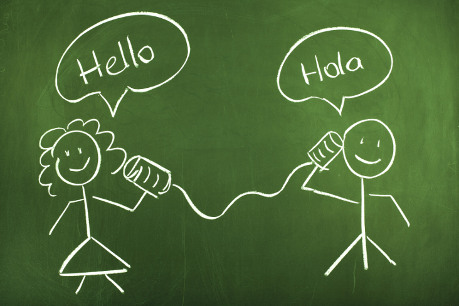Menu
Spanish lesson 3. Physical descriptions of people in Spanish
If in previous Spanish lessons we learned how to describe places like our city or country of origin or how to talk about the personality of the people we know, today we will learn how to physically describe others and ourselves.
Describing the appearance of a person in Spanish will be very useful on your trip to Peru, Ecuador and Bolivia because it will allow you to talk about the people you meet while you are learning Spanish.
How to ask about a person’s physical appearance?
In Spanish, to refer to the physical aspect we can say “¿Cómo es?” (How is he/ she?) or “¿Qué aspecto tiene?” (What does he/ she look like?) This means that in Spanish we usually use two different questions to refer to the external appearance of people:
What does she/he look? (Cómo es ella/él? / ¿Qué aspecto tiene ella/él? )
As for the way to answer these questions, two different verbs are used:
“ser” → to be (Yo soy rubia. / I am blonde.)
“tener” → to have (Yo tengo el pelo rubio / I have blond hair)
Remember that the verb “ser” is irregular and that it is conjugated differently according to the person, gender and number:
- Yo soy
- Tú eres
- él/ ella es
- Nosotros somos
- Vosotros sois
- Ellos/ Ellas son
In our lesson “Ser, Estar y Tener” we explain in detail everything you need to know in order to use both verbs correctly.
For example:
Yo soy… alto / I’m tall
Tú eres… bajo / You’re short
Ella/él es… delgada/o / She/he is thin
Nosotros somos… de piel morena / We’re dark-skinned
Vosotros sois… pelirrojos / You are redheads
Ellas/ellos son… jóvenes / They are young
Yo tengo… los ojos azules / I have blue eyes
Tú tienes… el pelo largo / You have long hair
Ella/él tiene… pecas / She/He has freckles
Nosotros tenemos… la cara redonda / We have the round face
Vosotros tenéis… bigote / You have a mustache
Ellas/ellos tienen… la nariz grande / They have a big nose
The verb “lucir” (look) , like the verb “ser”, is also irregular and is used to describe the external aspect.
- Yo luzco
- Tú luces
- Él/ ella luce
- Nosotros lucimos
- Vosotros lucís
- Ellos/ ellas lucen
For example, we can also ask: “¿Como luce Ana?” “Ella luce bella” (She looks pretty.) or “¿Cómo luce Miguel?” (What does Miguel look?) “Miguel luce el pelo alborotado” (Miguel has disheveled hair).
Asking and answering questions about people’s physical appearance
Español
A: ¿Cómo es ella?
B: Ella es morena
A: ¿Qué aspecto tiene él?
B: Él es un hombre joven y de estatura mediana
English
A: What’s she like?
B: She’s a brunette
A: What does he look like?
B: He is a young man of medium height.
Adjectives and nouns to describe people
In Spanish, adjectives and nouns describing people must coincide in gender and number with the subject. That is to say, they will be feminine or masculine and will be written in singular or plural, according to the subject.
Examples:
Yo tengo las manos pequeñas.
I have small hands.
María es bonita y tiene los ojos verdes y el pelo castaño.
Maria is pretty and has green eyes and brown hair.
Mi padre es calvo.
My father is bald.
En mi familia tenemos muchos lunares.
We have a lot of moles in my family.
Vosotros sois fuertes.
You guys are strong.
Mis vecinos son bajos y tienen el pelo corto.
My neighbors are short and have short hair.
Physical Aspect of People: Exercise
Take a look at the next conversation:
Estudiante A: Yo creo que el estudiante B es joven, alto y tiene unos ojos bonitos..
Student A: I think student B is young, tall and has nice eyes.
Estudiante B: Pues, yo creo que la estudiante A es bella y tiene el pelo castaño, corto y rizado..
Student B: Well, I think student A is beautiful and has brown hair, short and curly.
Let´s practice – How are you physically and how are the people you know?
Fill in the blanks with the appropriate words to form a sentence with the correct structure.
Download exercise Download exercise answers







